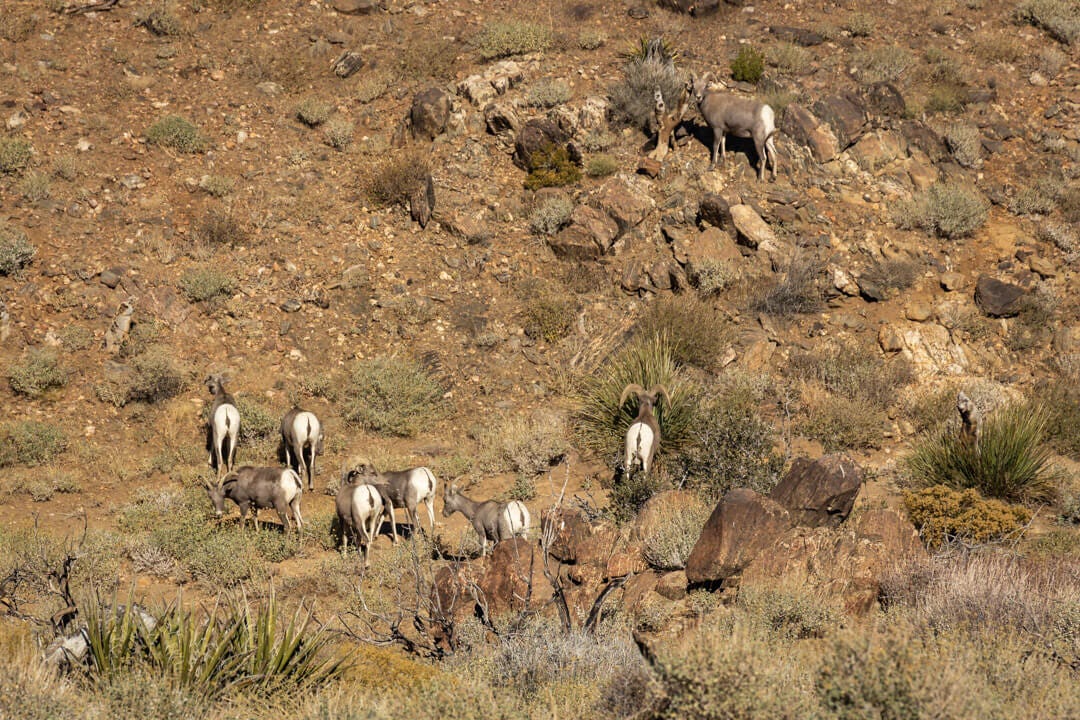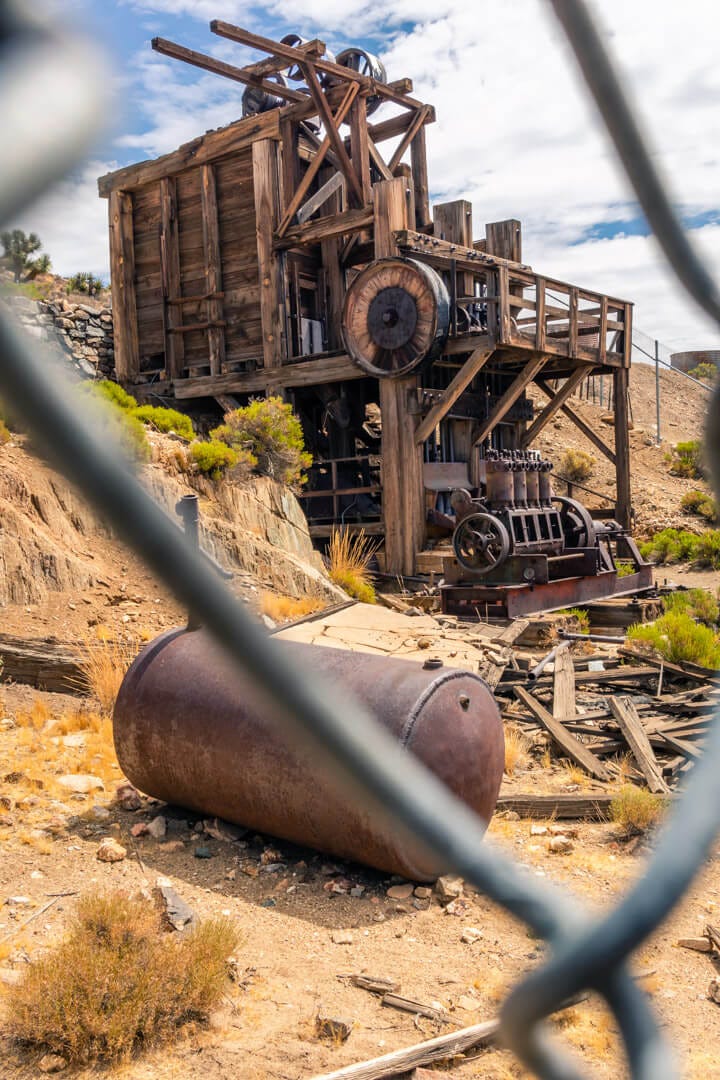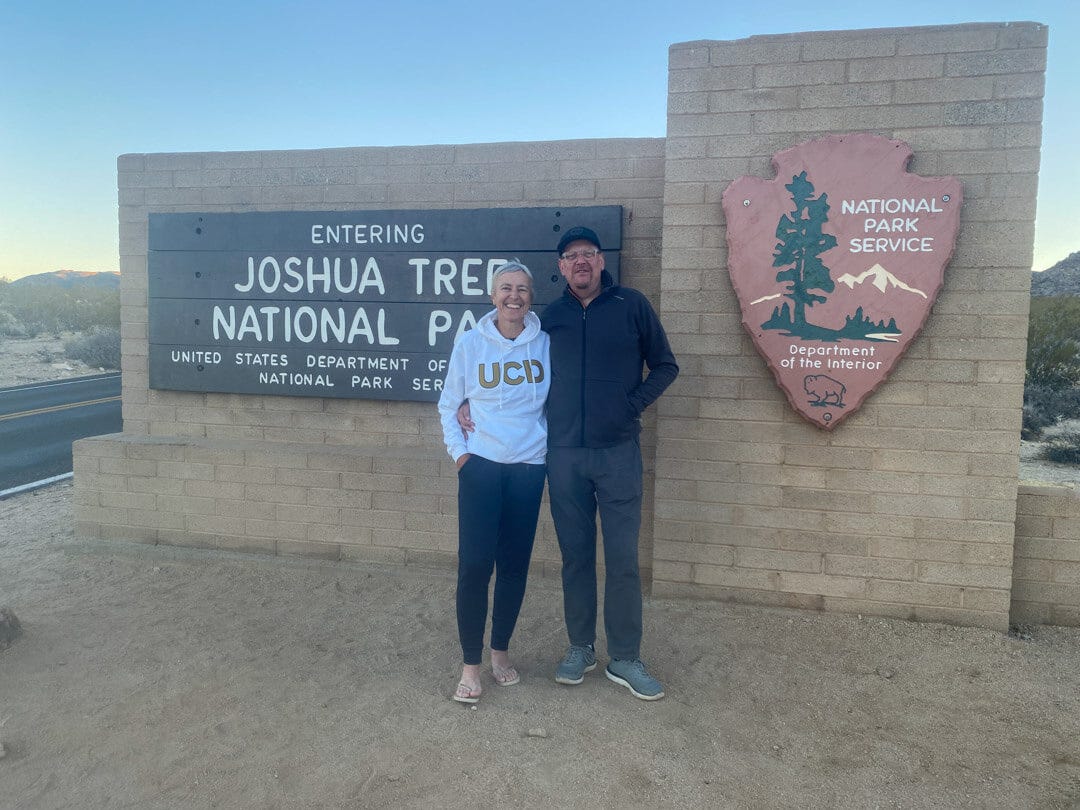Big Horn Sheep and the Lost Horse
Explore Landscapes #12: After more than a hundred trips to Joshua Tree National Park over the past eight years, I finally got to see my first bighorn sheep in the wild, not one, a herd of them.
It was great to go hiking in the park last weekend (off the clock - i.e., not on a workshop) with my wife and some friends visiting from the UK. I’d mentioned that we could take the hike up to the Lost Horse Mine to round out our 2-day trip. It features a great mix of desert wilderness views and historical artifacts.
After parking in a pull-in on the tarmac - as the trailhead parking lot was full by the time we arrived - it’s a good 3 miles with 900 feet of elevation gain to get to the mine.
As we got closer to the mine, I looked up when I heard the words, “Look Jon - sheep!” About one hundred feet away from us was a herd of eight desert bighorn sheep grazing on the steep rocky hillside beneath our trail.
It was such a wonderful experience to see these magnificent animals in the wild. The image above isn’t going to win any nature photography awards (there’s a reason I shoot landscapes) - but I took a few shots anyway to memorialize the sighting. I was so shocked to see them that I stood still and watched for five to ten minutes before getting my camera out of my backpack.
When the sheep are facing you, their natural camouflage works very well, and you can barely make them out against the rocks and vegetation typical in the higher areas of the park. However, their white backsides stand out clearly from the terrain when they turn away from you.
The rams (often weighing over 200 lbs /90 kg) have distinctive massive brown horns that curl back over their ears, down past their cheeks. Their horn size is a symbol of their ranking within the herd. The ewes are smaller than the rams, with shorter horns that have a half curl.
The total bighorn population of about 13,000 is spread across the desert mountains of eastern California, much of Nevada, northwestern Arizona, and southern Utah. The Joshua Tree National Park population is estimated to be between 100 and 200.
In the late 1890s, Jonny Land and the Ryan brothers (J.D., Matt, and Tom) started work on the Lost Horse Well - located by their Adobe ranch ‘Ryan Ranch’ - and began laying the 3.5-mile two-inch cast-iron pipeline from the well to the mine. The pipeline is still visible today as much if it runs along the surface rather than being buried.
Much of the steam-powered ten-stamp mill remains today and provides a fascinating glimpse into the gold rush era of the 1890s to 1930s.
As Thomas Crochetiere notes in his excellent book, ‘The History of Joshua Tree National Park,’ “A shipment of ore was made from the mine to Banning every week. This trip took five days and required the use of two 16-horse freight wagons, a water tank, and a feed rack.”
Lost Horse Mine was one of the most productive mines in what is today’s park and produced more than 10,000 ounces of gold and 16,000 ounces of silver. That would be worth about $18 million today.
It never ceases to amaze me what those early settlers accomplished in such a hostile environment as the high desert - with none of the modern technology that we take for granted today.
After the hike up to the mine, we stopped for a while, ate our lunch, and enjoyed the views over the park and out towards San Jacinto (10,834 feet) and San Gorgonio (11,503 feet). The sausage sandwiches were so good that I neglected to take my camera out and capture a shot - shame on me!
We took our time and enjoyed the view across the park before returning down the trail to the trailhead and then back to the truck.
We were heading back to OC that evening, so before leaving the park, we stopped for a well-deserved tailgate tea/coffee break with some homemade lime cheesecake thrown in for good measure. Overall, a wonderful weekend of hiking and exploring in Joshua Tree National Park.









